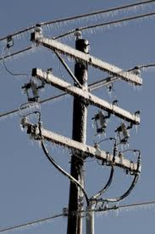
Since hurricane Sandy there has been much debate whether we should be asking our utility companies to bury the power lines underground. Many have been saying that this would prevent the outages that typically happen whenever there is a severe weather event.
Of course it would be aesthetically pleasing to not have to see wires everywhere, and there would be less poles to crash cars into. But what would it cost to bury all the electrical service in our area?
Most experts estimate the average cost for a city with our density to be around 1 million dollars per mile.
Many experts say that if it’s a million dollars a mile, you’d have to have 50 hurricanes before it would start to pay for itself.
Of course it would be aesthetically pleasing to not have to see wires everywhere, and there would be less poles to crash cars into. But what would it cost to bury all the electrical service in our area?
Most experts estimate the average cost for a city with our density to be around 1 million dollars per mile.
Many experts say that if it’s a million dollars a mile, you’d have to have 50 hurricanes before it would start to pay for itself.
Lawmakers and regulators, instead, will probably push utilities to invest selectively to strengthen portions of their network that have failed repeatedly during recent storms.
Utilities can bury portions of main lines that are vulnerable to wind or tree damage,or place smaller lines underground that run to individual properties.
Other steps to reduce storm-related power losses include replacing wooden poles with concrete ones and adding devices that automatically redirect electricity to isolate portions of the circuit that fail, limiting the extent of blackouts.
Whatever improvements end up happening, if any, you can expect to see your electric bill go up.
Utilities can bury portions of main lines that are vulnerable to wind or tree damage,or place smaller lines underground that run to individual properties.
Other steps to reduce storm-related power losses include replacing wooden poles with concrete ones and adding devices that automatically redirect electricity to isolate portions of the circuit that fail, limiting the extent of blackouts.
Whatever improvements end up happening, if any, you can expect to see your electric bill go up.
 RSS Feed
RSS Feed